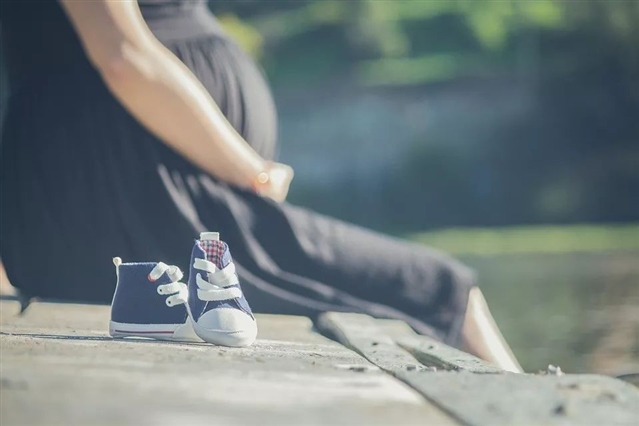|
|
|
|
|
中国女性母乳喂养与绝经后骨质疏松症是否有关?| BMC Women's Health |
|
|
论文标题:Association of breastfeeding and postmenopausal osteoporosis in Chinese women: a community-based retrospective study
期刊:BMC Womens Health
作者:Guiming Yan,Yaqi Huang et.al
发表时间:2019/08/13
数字识别码: 10.1186/s12905-019-0808-0
微信链接:点击此处阅读微信文章
绝经后骨质疏松症(Postmenopausal osteoporosis,PMOP)长期以来一直是公众关心的焦点问题。随着中国人口的老龄化,绝经后骨质疏松的预防、诊断和管理尤为重要。在母乳喂养期间,为了婴儿的成长,母体骨骼中大量的钙质流失。然而,这种流失是否是可以完全恢复的仍然存在争议。母乳喂养与绝经后骨质疏松的关系因社会环境而异,而且在文献中目前尚无定论。发表在BMC Womens Health 的研究Association of breastfeeding and postmenopausal osteoporosis in Chinese women: a community-based retrospective study,目的就是基于中国绝经后人群的数据来探究母乳喂养是否是导致PMOP发病的独立因素。

图1
作者在天津小白楼街社区卫生服务中心自2017年12月至2018年6月进行了回顾性横断面调查。实验招录了年度体检或在常规疾病筛查时进行了骨密度检测的50岁以上的绝经后女性。一名训练有素的社区护士通过面谈向所有参与者进行了问卷调查。调查了参与者的年龄、BMI、维生素D与钙的摄入量、吸烟饮酒和是否有骨折史、初潮与绝经的时间、怀孕与分娩的次数以及喂养方式(母乳喂养、人工喂养和混合喂养)以及母乳喂养的总时间。我们在骨矿物质密度(BMD)测量时,使用的是在双侧半径处进行的定量超声(quantitative ultrasound,QUS)方法。
研究总共纳入了202名符合入选和排除标准的女性。单因素分析发现,母乳喂养超过24个月的女性患骨质疏松的风险增加(OR 39.00,95%CI 2.40-634.65,p = 0.010)。但是,母乳喂养总时间与骨质疏松风险的多元分析表明,当控制了年龄、BMI、怀孕和分娩次数这些变量后,母乳喂养总时间并不是绝经后骨质疏松症的一个独立危险因素(OR 5.22, 95%CI 0.18–147.76, p = 0.333)。此外,年龄(OR 1.16, 95%CI 1.05–1.29, p = 0.003)、BMI(OR 1.26, 95%CI 1.04–1.54, p = 0.021)和怀孕次数(OR 1.80, 95%CI 1.08–2.98, p = 0.024)与绝经后骨质疏松症显著相关。
母乳喂养与绝经后骨质疏松症并不相关,而年龄、BMI和怀孕次数可能会影响中国女性绝经后骨质疏松症的患病风险。
BMC Womens Health
点击此处访问期刊主页
BMC Womens Health is an open access, peer-reviewed journal that considers articles on all aspects of the health and wellbeing of adolescent girls and women, with a particular focus on the physical, mental, and emotional health of women in developed and developing nations. The journal welcomes submissions on womens public health issues, health behaviours, breast cancer, gynecological diseases, mental health and health promotion.
Citation Impact
1.592 - 2-year IF
2.297 - 5-year IF
1.097 - SNIP
0.887 - SJR
摘要:
Background
Postmenopausal osteoporosis (PMOP) has long been a pervasive public health concern. With the aging Chinese population, the prevention, assessment and management of postmenopausal osteoporosis were particularly important. During the breastfeeding, a large amount of Calcium loss from maternal bone for infants’ growth. However, whether this loss is completely reversible remains controversial. As the relationship between breastfeeding and postmenopausal osteoporosis is different from society to society and is not clear from the literature, the purpose of this study was to determine whether breastfeeding was an independent factor for the development of PMOP based on Chinese postmenopausal population.
Methods
A retrospective cross-sectional investigation was conducted at Tianjin Xiaobailou health Community Healthcare Center between December 2017 and June 2018. Postmenopausal women over the age of 50 who underwent the annual health examination or visited the center to perform bone densitometry as a part of routine screening for disease were recruited. A trained community nurse administered a questionnaire to all participants by face-to-face interview. Participants were questioned about age, BMI, Vitamin D and calcium intake, the history of smoking, drinking and fracture, age of menarche, age of menopause, the number of pregnancy, parity, feeding pattern (breastfeeding, artificial feeding and mixed feeding) and overall breastfeeding duration. BMD measurements were carried out using quantitative ultrasound (QUS) at the bilateral radius.
Results
A total of 202 women who met the inclusive and exclusive criteria were enrolled. Univariate analysis revealed that overall breastfeeding more than 24 months increased the risk of osteoporosis (OR 39.00, 95%CI 2.40–634.65, p = 0.010). However, multivariate estimate of the risk of osteoporosis by overall breastfeeding duration suggested that when controlling for age, BMI, the number of pregnancy and parity, the overall breastfeeding duration was not an independent risk factor for postmenopausal osteoporosis (OR 5.22, 95%CI 0.18–147.76, p = 0.333). Additionally, age (OR 1.16, 95%CI 1.05–1.29, p = 0.003), BMI (OR 1.26, 95%CI 1.04–1.54, p = 0.021) and the number of pregnancy (OR 1.80, 95%CI 1.08–2.98, p = 0.024) were significant associated with postmenopausal osteoporosis.
Conclusion
Breastfeeding was not associated with postmenopausal osteoporosis, while age, BMI and the number of pregnancy may contribute to increasing risk of postmenopausal osteoporosis in Chinese women.
(来源:科学网)
特别声明:本文转载仅仅是出于传播信息的需要,并不意味着代表本网站观点或证实其内容的真实性;如其他媒体、网站或个人从本网站转载使用,须保留本网站注明的“来源”,并自负版权等法律责任;作者如果不希望被转载或者联系转载稿费等事宜,请与我们接洽。